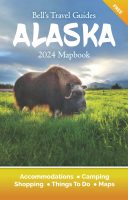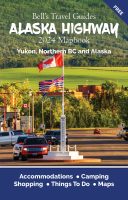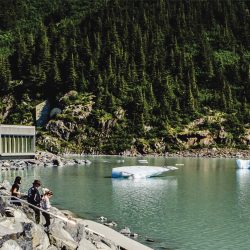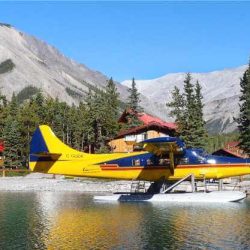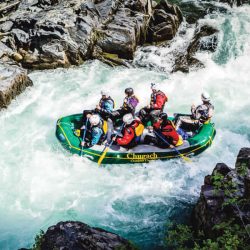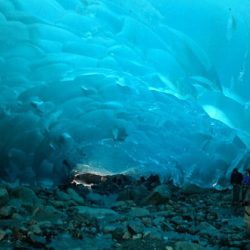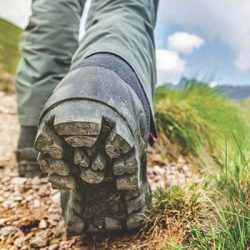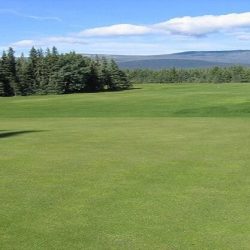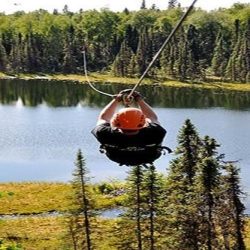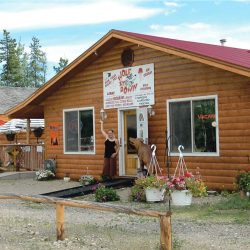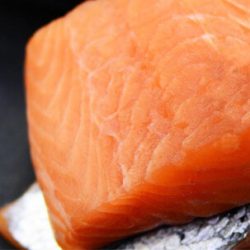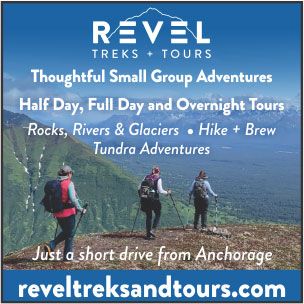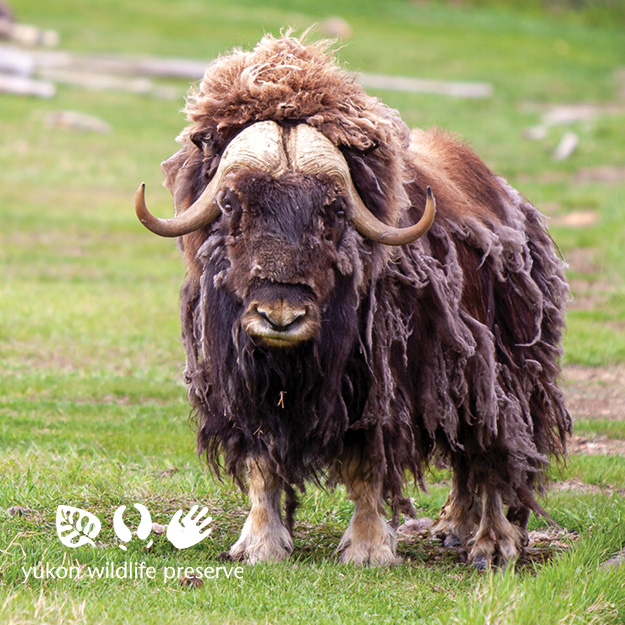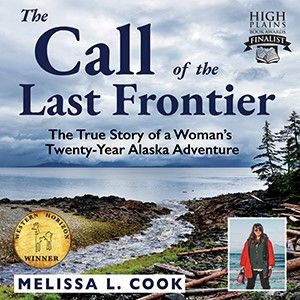Glacier Bay National Park is a breathtakingly beautiful destination, located at the very northern end of Southeast Alaska. According to the National Park Service, it has 3.3 million acres of incredible glaciers and mountains, making it one of the largest international biosphere reserves in the world.
This vast wilderness provides visitors with outstanding adventure opportunities and stunning scenery. The park features tidewater glaciers, lush rainforest valleys, and abundant marine life. Glacier Bay National Park beckons those seeking adventure and connection with nature’s raw power.
In 1794 explorer Captain George Vancouver sailed into Icy Strait. He found it choked with ice, and what was to become Glacier Bay was barely noticeable. That ice was more than 4,000 ft. thick, up to 20 miles wide in places and extended more than 100 miles to the St. Elias Mountain Range.
In 1879 John Muir found that the ice had retreated 48 miles up the bay and by 1916 the Grand Pacific Glacier had retreated 65 miles from Glacier Bay’s mouth. This rapid retreat is only found here in Southeast Alaska. Scientists have been studying the phenomena hoping to learn how glacial activity affects climate change.
Just 50 miles northwest of Juneau (25 minutes by air), Glacier Bay is the largest national park in Southeast Alaska, the world’s largest protected marine sanctuary, and a World Heritage Site. At 3.3 million acres, it’s larger than the state of Connecticut.
The marine wilderness of Glacier Bay National Park and Preserve includes tidewater glaciers, snow-capped mountain ranges, ocean coastlines, deep fjords, and freshwater rivers and lakes.
As you enter Glacier Bay, remember you are cruising along shorelines that were completely covered by ice just 200 years ago. The glaciers seen here today are remnants of a general ice advance ‘The Little Ice Age’ that began about 4,000 years ago and reached its maximum extent here around 1750.
Alaska Airlines and Alaska Seaplanes make regularly scheduled flights from Juneau to Gustavus
Glacier Bay can be experienced in several different ways.
Most will see Glacier Bay National Park from the comfort of a large cruise ship that spends the day cruising the calm waters, sharing the scenery and wildlife. Guest can wander the decks of their cruise ship taking in the views as they pass by these stunning mountains and glaciers.
Independently minded visitors may prefer to create their own adventure and visit Glacier Bay in a more intimate way. Visitors can reach Gustavus, the small town surrounded by the national park, by plane or ferry. From Gustavus there are opportunities to explore the park on foot, by tour boat or with small water craft like kayaks.
Whether you’re looking for an outdoor escape full of adrenaline rushes or simply want to soak up some natural beauty, there’s something for everyone.
Spectacular Glaciers
What a sight to behold! The spectacular glaciers of Glacier Bay National Park seem like something out of a fairytale. These powerful glaciers have been shaping the landscape of Glacier Bay for hundreds of years.
Here are a few of the largest tidewater glaciers you may see on your trip through the park.
Margerie Glacier
The Margerie Glacier is one of the most noteworthy in the park. It’s an immense wall of ice that stretches on for miles, right up until it reaches its termination point where it meets the waters of the bay. Many, if not all of the major cruise lines will include a stop at Margerie Glacier on their day touring the waters of Glacier Bay.
Muir Glacier
Another must-see while visiting Glacier Bay National Park is Muir Glacier, which was named after naturalist John Muir himself. This glacial feature has existed since at least 1650 when explorer Yakutat discovered it during his expedition into Alaska. Since then, however, Muir Glacier has receded significantly.
Johns Hopkins Glacier
The Johns Hopkins Glacier is one of the most visited tidewater glaciers in Glacier Bay National Park. Found in the park’s southeastern corner, the glacier flows down from the Brady Icefield and enters the bay with a dramatic face. The glacier’s blue and white ice is especially visible from the bay and is an impressive sight. Johns Hopkins Glacier is also the only advancing tidewater glacier on the eastern side of the Fairweather mountain range.
Lamplugh Glacier
The Lamplugh Glacier is one of the most impressive tidewater glaciers in Glacier Bay. Located in the park’s northeastern corner, the Lamplugh Glacier is especially notable for its deep crevasses and blue ice, which are visible from the shore. The glacier’s movements can be seen and heard as it calves off chunks of ice into the bay.
Grand Pacific Glacier
Grand Pacific Glacier is a large, active tidewater glacier that flows from the Fairweather Mountain Range into Glacier Bay. It is over six miles long with a face of 65-150 feet and can be seen from many points in the park.
McBride Glacier
McBride Glacier is a large tidewater glacier. It is over six miles long with an exposed face of over 200 feet and has been receding since the early 20th century. It has a deep, blue color caused by the high levels of glacial silt suspended in the water.
Gilman Glacier
Gilman Glacier is another large, active tidewater glacier that flows from the Fairweather Range into the bay. It is nearly ten miles long and has a face of 100-200 feet. Its deep, blue color caused by the high levels of glacial silt suspended in the water is a sight to behold.
Cruise Ship Visits
Cruise ship visits to Glacier Bay National Park are a popular way for visitors to experience the beauty of this UNESCO World Heritage Site. Cruises offer passengers an up-close look at the glacier’s ice walls and wildlife such as humpback whales and sea lions.
Glacier Bay Lodge
Glacier Bay Lodge, in the Bartlett Cove area of the National Park, is a full-service hotel that offers luxury accommodations and unique Alaskan experiences. Guests have access to kayaking trips, fishing charters, guided hikes through old growth coastal forest, and wildlife tours with opportunities to observe black bear, grizzly bear, moose, dall sheep, eagles and other animals in their natural habitat. The lodge provides all necessary gear for outdoor activities so visitors can fully enjoy the experience without having to worry about bringing your own equipment. The Glacier Bay Lodge is the only accommodation located inside the National Park.
The staff at Glacier Bay Lodge are knowledgeable about local history and culture and provide excellent customer service to enhance guests’ visits. Whether you’re looking for adventure or relaxation during your stay here, this serene setting will leave you feeling refreshed and invigorated after exploring its abundant wildlife observation opportunities.
Abundant Wildlife Viewing
Glacier Bay National Park offers an unparalleled opportunity for wildlife viewing. From majestic brown bears and black bears to playful sea otters and harbor seals, humpback whales to bald eagles soaring overhead, these are just some of the many species of animals that make the park their home. With its stunning landscape and abundant wildlife population, Glacier Bay is a paradise for nature lovers looking to observe wild creatures in their natural habitats.
One of the best ways to experience all that Glacier Bay has to offer is by taking part in one of its boat tours or wilderness cruises. These guided excursions allow visitors to get up close with various types of marine mammals and birds as well as catch glimpses of brown bears grazing along the shoreline. Tour guides provide valuable insight into the area’s ecosystems while also providing helpful tips on how to stay safe when observing wild animals in their natural environment.
For land-based exploration, there are plenty of trails through glacier valleys and forested areas where hikers may encounter wildlife such as mountain goats, bear and moose. You may also spot orca’s or humpback whales from the shoreline. Whether you’re out on a boat tour or exploring inland trails, it’s sure to be an unforgettable adventure filled with incredible sights and sounds unique to this rugged corner of Alaska.
Visitor Center & Park Rangers
Located at the park headquarters in Bartlett Cove, visitors can find many resources including:
- Day cruise options through the bay
- Guided tours
- Educational programs and events
- Bartlett Cove Campground
- Ranger-led activities
Visitors can participate in hikes, beach walks, and lectures on topics such as local history or marine life. Ranger stations provide information about local regulations and safety precautions that must be followed while exploring the area. In addition, there are ranger-led boat tours that explore various aspects of the region’s ecology. National Park Rangers are sure to help you have an enjoyable experience when spending time in the park.
Tour Boats & Sea Kayaks
Glacier Bay National Park offers some of the most spectacular glaciers and marine wildlife in Alaska. Visitors can take a tour boat or sea kayak out into the waters of Glacier Bay to experience this breathtaking landscape up close. During the summer season, visitors may be lucky enough to spot humpback whales, orcas, seals, porpoises, dolphins and even sea lions frolicking in the frigid waters of Glacier Bay.
While on board a tour boat or sea kayak, visitors can also explore hidden coves and catch glimpses of majestic mountain peaks that rise above snow-capped cliffs. The surrounding water is filled with vibrant colors as it reflects off ice blue glaciers and sparkling emerald green waves. Kayakers have an added perk: they are able to travel closer to the shoreline than motorized vessels which allows them to see more wildlife while still maintaining a safe distance.
No matter what mode of transportation one chooses for exploring this paradise, there’s no denying that Glacier Bay National Park is truly captivating. It provides an unforgettable opportunity to witness its incredible beauty.
Gustavus, Alaska
At first glance, the quaint, small town of Gustavus may appear to be an ordinary place. However, it is the gateway to one of the most spectacular wilderness areas in Alaska: Glacier Bay National Park.
Gustavus is also the main transportation hub for independent visitors to Glacier Bay. The airport has regular service from Alaska Seaplanes and Alaska Airlines (summer only). The short flight from Juneau allows some passengers to arrive in time for a day cruise before catching the last flight back to Juneau at the end of the day. It makes for a very long day and it’s recommended to spend at least one night at Glacier Bay Lodge or in Gustavus, where there are a number of B&B’s and accommodation options.
Gustavus is also a port of call for the Alaska Marine Highway, the ferry that connects the towns of Southeast Alaska. If you are traveling the Alaska Marine Highway with an RV there is one campground in Gustavus.
UNESCO World Heritage Site
Glacier Bay National Park is a UNESCO World Heritage Site, one of only 24 in the United States. The park encompasses an area spanning over 3 million acres and features majestic glaciers, snow-capped mountains, deep fjords and lush forests. In addition to its stunning natural beauty, Glacier Bay carries significant scientific value due to its unique ecosystem. Glacier Bay forms part of the largest UNESCO World Heritage Site in the world, made up of: Glacier Bay National Park, Wrangell-St. Elias National Park, Kluane National Park in the Yukon and the Tatshenshini-Alsek Provincial Park in British Columbia.
The park’s designation as a World Heritage Site acknowledges the importance of preserving this special place for future generations. As part of the recognition, Glacier Bay has been designated a biosphere reserve by UNESCO. This status provides additional protections and resources to ensure the fragile environment within the bay is protected from human exploitation or destruction.
Despite these challenges, Glacier Bay National Park continues to be recognized globally for its immense cultural and ecological significance – drawing people from near and far so they can experience its awe-inspiring beauty firsthand.
Frequently Asked Questions
How Much Does It Cost to Enter Glacier Bay National Park?
Glacier Bay is unique in that there is no fee to enter the National Park. However, getting here can be time consuming and expensive, so keep that in mind. But at least there is no additional cost once you arrive.
Are There Any Guided Tours Available?
Yes, there are guided tours available. The most common tour for people to take through the park is the day long boat tour from Glacier Bay Lodge. There are also guided kayaking adventures available in Glacier Bay. Glacierbayseakayaks.com offers both guided and unguided tours throughout the national park. If you’re interested in a cruise that visits Glacier Bay we offer a one week cruisetour that visits Dawson City in the Yukon and Glacier Bay. All in one week.
Are There Any Restaurants in The Park?
The Fairweather Dining Room in the Glacier Bay Lodge is the only restaurant located in the National Park. However the nearby town of Gustavus has restaurants open year round.
Is There Camping Available in Glacier Bay National Park?
There is one designated campground in Bartlett Cove but campers can also obtain a backcountry camping permit to access wilderness camping opportunities. Camping in the designated campground as well as the backcountry is free, but you must register with the National Park Service. Anyone traveling into the backcountry is required to complete an orientation training at the Visitor Information Station.
https://www.nps.gov/glba/planyourvisit/camp.htm
https://www.nps.gov/glba/planyourvisit/campground.htm
If you’re looking for an adventure in nature, then Glacier Bay is definitely worth exploring. Not only does it offer stunning views from its high peaks, but there are also plenty of trails to explore and coves to camp out on. Campers can find both primitive and developed sites within the park boundaries.
Is There Wheelchair Access in The Park?
The good news is that Glacier Bay National Park does offer some level of wheelchair access throughout its trails and facilities. Some of the major paths around Bartlett Cove have been made accessible for those using wheelchairs or strollers. Glacier Bay Lodge has wheelchair ramps and elevator access. For more information on accessibility visit the National Parks Service. Glacier Bay sees most of it’s visitors via cruise ship, which are typically very wheelchair accessible. This is one more way that those with mobility challenges can enjoy Glacier Bay.
What’s so special about Glacier Bay National Park?
Glacier Bay National Park is a stunningly beautiful park located on the coast of Alaska. It is part of the world’s largest UNESCO Heritage Sites, with over 1000 glaciers, amazing wildlife, and rugged glacier-carved shores. The park also includes the Glacier Bay National Monument and the Glacier Bay Wilderness Area, making it a must-see destination for anyone looking to explore the wild beauty of Alaska.
What City is Near Glacier Bay National Park?
The closest town to Glacier Bay is Gustavus. This small town is surrounded by the national park and has an airport and ferry port. The closet large city to Glacier Bay National Park is Juneau, Alaska’s capital. Juneau is easily accessible by air and by ferry. Juneau is a 30 minute flight to Gustavus and a 4.5 hour ferry ride.
Is Glacier Bay National Park worth it?
Glacier Bay National Park is definitely worth it! There is nothing quite like the natural beauty of this park, and the experience of visiting it is something that you will remember for a lifetime. Whether you are looking for an outdoor adventure or to just enjoy a relaxing cruise through Glacier Bay you are sure to find this spectacular national park worth the visit.
Are there Bears in Glacier Bay?
Yes, there are bears in Glacier Bay National Park. Black bears and brown bears can both be found in the area. It is important to remember to keep your distance from any wildlife you encounter and always obey the park’s safety regulations. If you are venturing into the backcountry, you must visit the park headquarters in Bartlett Cove to get permits and receive a safety briefing.
Are there Orca’s in Glacier Bay
Yes, there are orca’s in Glacier Bay. This is an exciting opportunity for wildlife viewing, as the orca’s can often be seen swimming around the bay. It is important to remember to keep your distance and respect the orca’s natural habitat.
